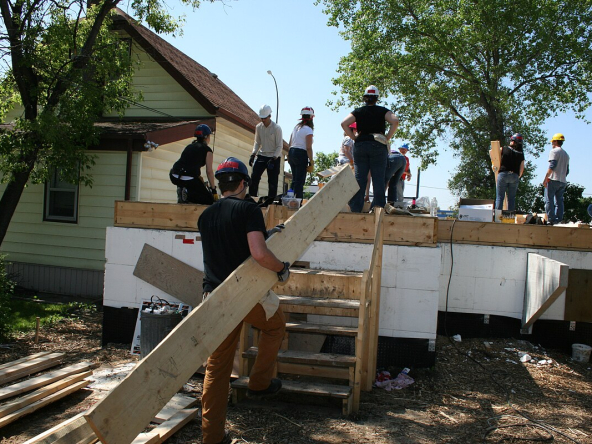Enhancing community well-being through property initiatives is an endeavor that intertwines the realms of real estate, social responsibility, and community development. From revitalizing neighborhoods to fostering inclusivity, property initiatives play a pivotal role in shaping thriving communities.
The Power of Purposeful Property Initiatives
Communities are more than just clusters of houses; they are vibrant ecosystems where people live, work, and interact. Property initiatives designed with a community-centric approach have the potential to transform these spaces into hubs of well-being and connectivity.
Revitalizing Neighborhoods: One of the most impactful property initiatives is the revitalization of neighborhoods. Neglected areas can be transformed through redevelopment projects that include affordable housing, green spaces, and communal facilities. When a neighborhood undergoes positive change, it creates a domino effect, boosting local morale and fostering a sense of pride among residents.
For instance, repurposing abandoned buildings into community centers or art spaces not only breathes new life into the area but also encourages social interaction and cultural enrichment.
Promoting Sustainable Living: Property initiatives focused on sustainability contribute significantly to community well-being. Integrating eco-friendly features into buildings, such as solar panels, rainwater harvesting systems, and energy-efficient designs, not only reduce environmental impact but also lower utility costs for residents. This promotes a healthier environment while simultaneously enhancing the financial well-being of the community members.
Creating Inclusive Spaces: Inclusivity is a cornerstone of a healthy community. Property initiatives that prioritize accessibility, both physical and social, ensure that everyone feels welcome and valued. This includes designing public spaces that are wheelchair accessible, implementing diverse housing options to cater to different socio-economic backgrounds, and fostering a culture of inclusivity through community events and initiatives.
Supporting Local Businesses: Commercial property initiatives can also significantly impact community well-being by supporting local businesses. Creating spaces for small enterprises not only boosts the local economy but also fosters a sense of community identity. Farmer’s markets, artisanal fairs, or collaborative workspaces can serve as catalysts for economic growth while encouraging community engagement.
Empowering Through Education: Investing in educational property initiatives, such as community libraries, tutoring centers, or vocational training hubs, empowers individuals and uplifts the entire community. Access to education and skill development opportunities enhances employability, promotes lifelong learning, and nurtures a culture of growth and empowerment.
The Role of Collaboration and Innovation
Enhancing community well-being through property initiatives requires collaboration among various stakeholders. Government bodies, real estate developers, local businesses, and community members must work hand in hand to identify needs, create plans, and implement sustainable solutions.
Innovation also plays a crucial role. Embracing new technologies in property development can lead to groundbreaking solutions. For instance, using augmented reality for community planning or employing blockchain for transparent property transactions can revolutionize how initiatives are conceived and executed.
Real-Life Examples
The High Line, New York City
The transformation of the High Line, an abandoned railway line, into an elevated urban park showcases the power of property initiatives. This project not only revitalized the area but also became a symbol of community engagement, offering green spaces, art installations, and fostering a sense of togetherness among residents.
The Vauban District, Freiburg, Germany
The Vauban District stands as a shining example of sustainable living. This car-free neighborhood prioritizes renewable energy, energy-efficient buildings, and communal spaces, creating a model for eco-friendly urban development. Residents here enjoy a high quality of life with reduced environmental impact.
Conclusion
In conclusion, property initiatives wield immense potential in enhancing community well-being. By focusing on revitalization, sustainability, inclusivity, economic empowerment, and education, these initiatives lay the foundation for stronger, more resilient communities.
When property development aligns with the needs and aspirations of the people it serves, it becomes a catalyst for positive change, fostering a sense of belonging and well-being among community members. Through collaborative efforts and innovative approaches, we have the opportunity to create spaces where every individual thrives, ultimately shaping a brighter future for generations to come.




